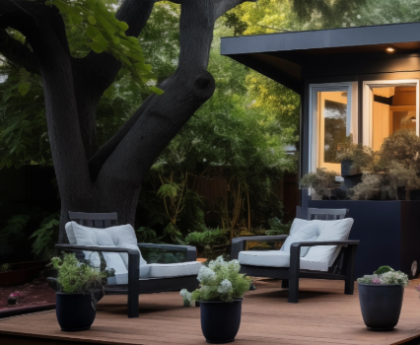
Amid a tight housing market fueled by a housing shortage, millions of Americans are struggling to find an affordable place to live. As an increasing number of communities turn to accessory dwelling unit development to increase the amount of affordable housing, a new tool looks to help streamline the process for local governments, residents and housing developers.
Accessory dwelling units, or ADUs, are small housing units built on a plot belonging to a main home. ADUs can be attached to the main property or constructed as a detached unit, but they have their own amenities like a separate kitchen, living and bedroom area.
Sometimes called granny flats or mother-in-law suits, the compact housing units are growing in popularity across the U.S., but California has spearheaded the ADU boom. In recent years, state lawmakers have passed laws to make ADU development more feasible. In 2019, the legislature authorized ADUs in areas zoned for single- or multi-family dwellings, prohibited minimum lot sizes that often stymie ADU construction and required local governments incorporate ADU development into their housing plans, among other measures, according to Cato Institute. The policies helped spark construction of ADUs, with the number of ADUs in the state increasing by nearly 200%—5,852 to 17,460 units—between 2019 and 2022.
A new law passed late last year—AB 1332—looks to further encourage ADUs by requiring local jurisdictions by Jan. 1, 2025, to develop a program for preapproving ADU projects. Under the policy, agencies must post preapproved plans to their websites and will also have 30 days to approve or deny detached ADU applications.
To help California communities increase their housing supply and comply with the new law, the Community Planning Collaborative, a housing policy and community engagement firm, has developed an online platform for government officials, architects and residents to manage authorized housing plans and where homeowners or developers will be able to find and select ADU projects they’d like to pursue.
Using CPC’s Plans Gallery, local officials can see ADU plans submitted by architects and developers and preapprove those they like. Jurisdictions can also add specs for prefabricated units and predesigned site-built plans to their ADU galleries. CPC will also create a public-facing gallery site for municipalities to share their preapproved ADU plans.
It’s like an Etsy for ADU designs, said David Driskell, CPC principal. Plus, the online gallery offers jurisdictions a cost effective way to comply with AB 1332 and meet housing goals, as most housing agencies are under resourced and understaffed, limiting their ability to stand up their own housing services.
Residents interested in building an ADU on their property can then view the approved units by features like location, size, square footage, bedrooms or bathrooms, among other filters. Unit profiles include information like expected construction cost, floor plans and unit descriptions. Once residents choose an ADU plan, the site provides the developer’s contact information so that the parties can proceed.
The CPC platform can help residents better understand how the ADU process works, as most people are not developers themselves, said Scott Johnson, director of the ADU Center, a nonprofit dedicated to educating homeowners about ADUs. They’re likely unfamiliar with the local land use rules and housing regulations, so they may be unsure when choosing appropriate plans for their property, for instance, or be unprepared for the construction expenses.
There’s a myriad of reasons for families to build housing units on their property, from providing a home for their aging parents or adult children to wanting to secure extra income by renting out an ADU. But as regular homeowners step into the developer space, Johnson said jurisdictions should recognize that residents are putting their personal finances and resources on the line to help solve the affordable housing crisis.
State and local governments “have to do everything they can … to make this process easier and make it cheaper, because that is going to help counter the higher interest rates [and] construction costs,” he added. Laws like AB 1332, for instance, can encourage community members to start ADU projects if they know the city can provide in-depth information about vetted ADU plans and their developers.
The gallery was piloted by the ADU Center, formerly known as the Napa Sonoma ADU Center, across 16 jurisdictions in California in 2020. Feedback from homeowners was largely positive, Johnson said. Residents reported, for instance, that the online gallery made it easier to visualize how different construction plans would look on their properties. Since 2020, the center has seen ADU permits across the 16 jurisdictions increase 60%, outpacing state growth of 54%.
The ADU Plans Gallery platform will first be rolled out to local governments in nine California counties this summer, with the public-facing galleries set to launch this fall, Driskell said. CPC plans to expand the platform statewide and scale it up to include other states where ADUs are gaining popularity like Washington, Colorado and Arizona.
“I can’t tell you how many homeowners I’ve spoken with who said, ‘Oh, I’ve been thinking about doing this for years, and we just didn’t know where to get started,’” Johnson said. “It was too hard before, but now there is a path forward.”



